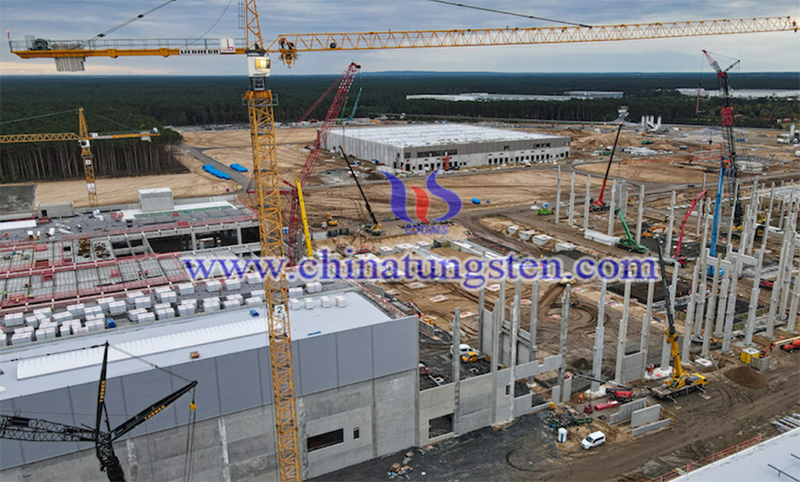Particularly Rare Earths, EU to Secure 30 Critical Raw Materials
- Details
- Category: Tungsten's News
- Published on Wednesday, 23 December 2020 19:25
Particularly rare earths, the European Union (EU) has launched an initiative that seeks to secure access to a total of 30 critical raw materials by increasing domestic production and promoting recycling of vital elements, according to the website Mining.com.
The European Raw Materials Alliance (ERMA), a partnership of over 300 companies, business associations and governments, will initially focus on breaking Europe’s dependence on imports from China and other resource-rich countries.

The EU imports around 98% of rare earths from China. Turkey supplies 98% of its borate, while Chile meets 78% of Europe's lithium needs. South Africa provides 71% of its platinum and Brazil supplies 85% of the old continent's niobium, a crucial part of steel alloys used in jet engines, girders and oil pipelines.
Bernd Schäfer, Director of EIT Raw Materials, said at a media conference that ERMA's most important task is to secure raw materials supply in Europe by identifying investment opportunities for sustainable and socially responsible access to raw materials in Europe from primary and secondary sources.
In response to rising commodity prices, the European Union began to increase its reserves of key raw materials in 2011, an increase of more than 100% in the past 10 years. In September, the European Union listed lithium, aluminum and titanium for aviation and medical use, as well as strontium required for permanent magnets for electric vehicles as key raw materials.
The analysis believes that, driven by the demand for electric vehicles and energy storage, by 2050, the consumption of lithium in the 27 EU countries will increase by 60 times and cobalt by 15 times. The rare earths required by the EU for high-tech and military equipment will increase by more than 10 times.
European Commissioner Maroš Šefčovič said in a web conference that some commodities listed as key materials will be self-sufficient. “For lithium needed for batteries and storage, we're confident that we can be 80% self-sufficient by 2025"
He noted that about 15 new battery cell plants, or gigafactories, were being built across Europe, including in Italy, France, Germany, Hungary, Poland, Slovakia and Sweden, which were expected to provide enough cells to power at least 6 million EVs in less than five years.
Financial Times analyst Alan Beattle believes that EU member states will face serious long-term difficulties, including the obstacles to mining caused by strict environmental and social supervision systems.
He cited as an example the Norra Karr project in Sweden, Europe's largest known rare earths deposit, which was declared off-limits to further exploration by the country’s supreme administrative court. The decision, Beattle noted, was triggered by potential environmental risks from the proposed operations and reversing that decision would be difficult.
"In addition, this also reflects the scarcity of the relevant materials. The rare earths supply chain and other similar key materials are difficult to diversify. Therefore, Europe should consider stability, environmental friendliness and economic development when looking for sources of raw materials for manufacturing Allies that can recreate the entire value chain." Beattle suggested.
- Rare Earth Manufacturer & Supplier, Chinatungsten Online: www.chinatungsten.com
- Tungsten News & Prices of China Tungsten Industry Association: www.ctia.com.cn
- Molybdenum News & Price: news.molybdenum.com.cn
- Tel.: 86 592 5129696; Fax: 86 592 5129797; Email: sales@chinatungsten.com



 sales@chinatungsten.com
sales@chinatungsten.com